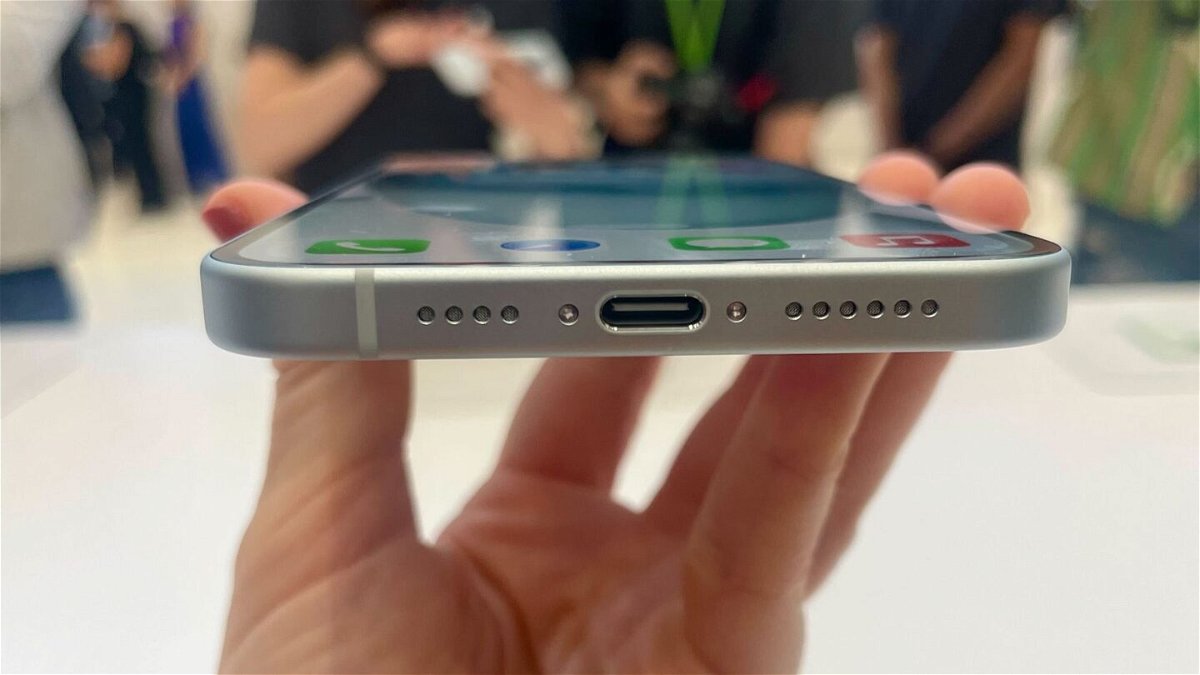Here’s why Apple’s charger switch is such a big deal

By Samantha Murphy Kelly, CNN
(CNN) — Apple retired its Lightning charger on Tuesday exactly 11 years to the day it was first announced.
The effort marks a milestone moment for the company by finally adopting USB-C, a universal charging system. That’s noteworthy not only because Apple has been resistant to do so for years but because it’s about to make charging that much easier for its customers.
But, as with most things, there’s a catch: The switch to a universal standard means Apple is giving up control of its wired charging ecosystem, and identifying good chargers from bad ones won’t be obvious to many consumers.
What is changing?
At its iPhone 15 event, the company announced all of its next-generation smartphones will launch with USB-C charging, and so will the latest iteration of its AirPods Pro. Although Apple has previously switched its iPads and MacBooks to USB-C charging, it has been resistant to making the change on the iPhone until now.
The switch would come less than a year after the European Union voted to approve legislation to require smartphones, tablets, digital cameras, portable speakers and other small devices to support USB-C charging by 2024. The first-of-its-kind law aims to pare down the number of chargers and cables consumers must contend with when they purchase a new device, and to allow users to mix and match devices and chargers even if they were produced by different manufacturers.
Now Apple customers can use the same USB-C chargers to power their iPhones, iPads and Mac computers — no more scrambling to find the right charger for each device. Charging can also occur between devices, such as connecting a low-battery iPhone to a fully-charged iPad, or similarly between different brands.
“This is arguably the biggest disruption to iPhone design for several years, but in reality, it is hardly a dramatic move,” said Ben Wood, an analyst at CCS Insight.
Last year, Apple’s senior vice president of worldwide marketing, Greg Joswiak, noted the value and ubiquity of the Lightning charger, which is designed for faster device charging, but noted “obviously we will have to comply” with the EU mandate.
“We have no choice, like we do around the world, to comply with local laws, but we think the approach would have been better environmentally and better for our customers to not have a government [have] that perspective,” Joswiak said at the time.
The EU’s decision is part of a greater effort to tackle e-waste overall, but could it generate more in the short term as people phase out their Lightning cables. Although Apple has voiced environmental concerns over what happens to old Lightning chargers, it has financial reasons for pushing back on the change, too.
The history of the Lightning charger
Apple introduced the Lightning charger alongside the iPhone 5 in 2012, replacing its existing 30-pin dock connector with one that enabled faster charging and had a reversible design. It also ignited a related accessories business, requiring users to buy a $30 Lightning adapter to connect the device to older docks, alarm clocks and speaker systems.
“For Apple, it was all about being in control of its own ecosystem,” said David McQueen, a director at ABI Research. “Apple makes good money from selling Lightning cables and its many related accessories.”
It also takes a financial cut from the third-party accessories and cables that go through its Made For iPhone program. “Moving to USB Type C would take away this level of control as USB-C is a much more open ecosystem,” McQueen said.
Apple is now selling a new $29 USB-C to Lightning adapter to allow people to connect their existing Lightning accessories to a USB-C-enabled iPhone or iPad to charge or share data. Similarly, Apple introduced a $29 dongle back in 2012 to connect the iPhone 5 – the first phone with its Lightning charger – to old docks, alarm clock radios and speaker systems.
What does this mean for iPhone users?
The move to USB-C won’t likely be an incentive for people to upgrade, but it could sway some consumers who have been resistant to the iPhone over its charging limitations, according to Thomas Husson, a vice president at Forrester Research.
Considering many mobile devices already use USB-C, including Apple’s own iPads and MacBooks, access to charging wires shouldn’t be too hard or costly.
But knockoffs abound, and some USB-C chargers are much safer than others. Some may provide too much power, and others not enough. Some can regulate the flow of electricity and data to your phone – and others can’t. Among CNN Underscored’s top recommendations for USB-C chargers are from big brands, including Anker, Belkin, Apple, Amazon and Google.
“Given how widely USB-C has been used in other devices, it’s hard to imagine that customers will be totally caught out by this switch, and in the long term, it’s likely to benefit them, with a universal charging system having some very obvious upsides,” Wood said.
Apple also said a dedicated USB-C controller will allow for transfer speeds of up to 20 times faster than with USB-2 technology for the iPhone 15 Pro.
Retiring the Lightning cable could even generate, in the short term, a surge of e-waste as iPhone users toss their useless Lightning cables in a drawer. But Apple told CNN it has an existing “robust” recycling program where you can bring in used chargers and cables. It’s also possible to look for a local e-waste recycling center or Best Buy store for environmentally friendly options.
The-CNN-Wire
™ & © 2023 Cable News Network, Inc., a Warner Bros. Discovery Company. All rights reserved.